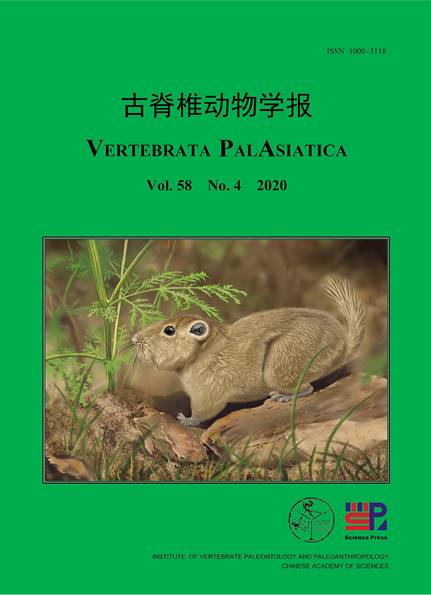
封面说明:乌兰塔塔尔丘齿鼠 (Bounomys ulantatalensis) 复原图。梳趾鼠类是一类具有始啮型或豪猪型头骨及松鼠型下颌的啮齿动物,因现生种类常常用脚趾上的硬毛梳理毛发而得名。该类群早始新世时起源于亚洲,繁盛于古近纪,现在仅剩 4 属 5 种残存于非洲北部和东部的荒漠或半荒漠地区。此次在内蒙古乌兰塔塔尔地区发现的乌兰塔塔尔丘齿鼠的新材料,是目前已知的渐新世梳趾鼠科中保存最为完整的头骨及下颌材料。头骨上的特征表明其可能适应于较为干旱的栖息环境。详见本期徐冉成、李茜文 (p. 305)。 ( 绘图:郭肖聪 )
Cover image: The reconstruction of Bounomys ulantatalensis (Ctenodactyloidea, Rodentia, Mammalia).Ctenodactyloids are a group of rodents with a protrogomorphous or hystricomorphous skull and a sciurognathous mandible. They are named after the living ctenodactylids comb their hair with the bristles on their toes.Ctenodactyloids originated in Early Eocene from Asia and flourished in the Paleogene. However, there are only four genera and five species surviving in desert or semidesert habitats of northern and eastern Africa. The newmaterial referred to Bounomys ulantatalensis was found from the Early Oligocene of Ulantatal, Nei Mongol, and at present it is the most complete skull and mandible material of the Oligocene Ctenodactylidae. The features on skull reflect the adaptation to the relatively arid habitat. See details in the paper of Xu and Li (p. 305). (Illusrated by Guo Xiaocong)